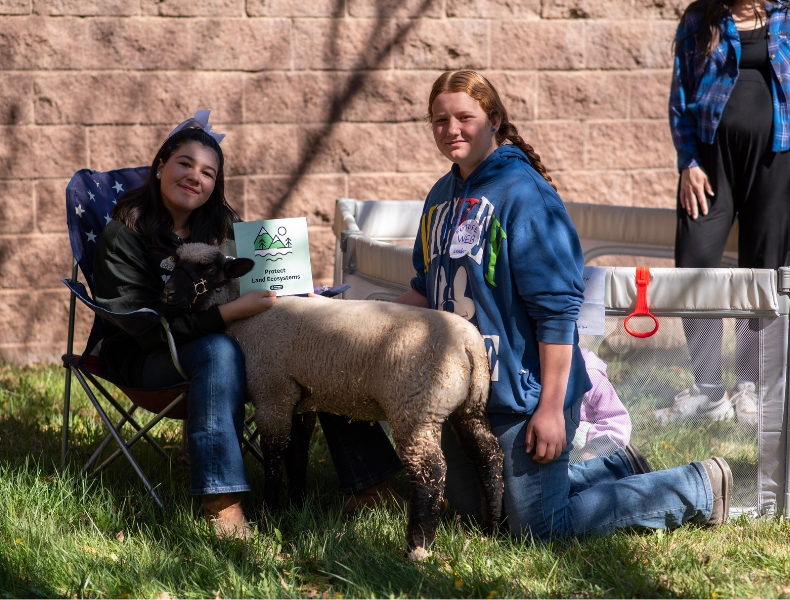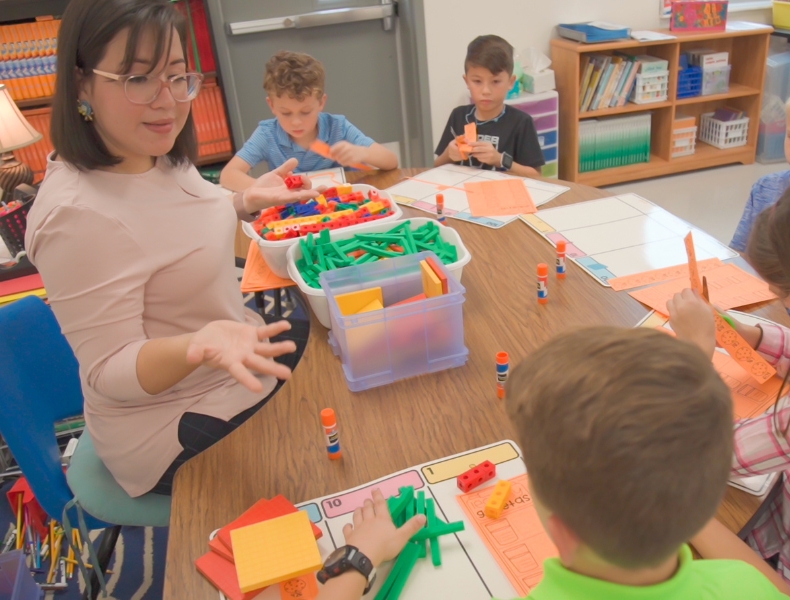Why Career Readiness Must Be Part of School Culture
Educators everywhere face an urgent and inspiring challenge: how to ensure that students are not only academically prepared, but truly ready for their lives beyond school. By using proven career readiness strategies, schools can equip students with the skills, mindsets, and experiences they need to succeed in life beyond graduation.
Career readiness today isn’t only about preparing students to land a job. It’s also about helping them apply what they know to solve real problems, contribute to their communities, and drive positive change in whatever paths they pursue.
Across many schools, career readiness already shows up in powerful ways: through career days, service projects, and inspiring guest speakers. The opportunity now is to deepen and extend those efforts through intentional career readiness strategies that reinforce future-ready skills every day, across the school culture.

Countless examples from our partner Global Leaders schools are confirming this shift: When career readiness becomes part of how students learn, reflect, and collaborate, it becomes more than preparation. It becomes transformation.
This article outlines three foundational shifts that allow career readiness to become a way of life in a school: shared leadership, community connections, and intentional human-centered skill development. Together, they create the conditions where students can apply what they know in meaningful ways to shape their communities, solve real challenges, and lead with purpose in whatever future they choose.
Shared Leadership Strategies to Build a Career-Ready School Culture
Career readiness takes root when everyone in a school—students, teachers, and administrators—has a role in shaping its direction. At Jackson Park Elementary in Kannapolis, NC, shared leadership is part of the daily rhythm of school life. Global Leaders committees, made up of staff and students, help design STEM Nights, lead morning meetings, and brainstorm ways to connect classroom learning with community needs.
Principal Will Gibson describes shared leadership as a practice where “all stakeholders are included in the structures and decision-making processes,” and that participation is visible across the school.
Teachers lead professional development sessions based on their expertise, collaborate in cross-grade planning teams, and guide each other in bringing global issues into core content. Students suggest service projects, help organize school events, and work with teachers to solve real problems, like designing peer tutoring programs or leading schoolwide recycling campaigns.

Benefits of Shared Leadership for Career Readiness
This kind of shared ownership builds:
- Stronger collaboration across grade levels and teaching teams
- Higher teacher investment and reduced burnout, as leadership is distributed
- A school culture where students see their ideas reflected in what happens every day
Shared leadership is one of the most effective career readiness strategies because it helps students experience what real leadership looks like, where listening, teamwork, and shared responsibility drive meaningful outcomes.
How Community Partnerships Strengthen Career Readiness in Schools
Career readiness cannot thrive solely within classroom walls. It flourishes when schools connect learning to the broader world and encourage students to act within it.
Community-connected schools build partnerships with families, local organizations, and even global enterprises. These partnerships create authentic learning opportunities grounded in real-world problems. It’s not about adding more to the calendar. It’s about designing instruction that begins with relevance and leads to action.
Growing Career Readiness Through a School Garden
At West Oxford Elementary, a Global Leaders school in North Carolina, students responded to local food insecurity by starting a school garden. Recognizing that many families in their community had limited access to fresh produce, they envisioned the garden as a shared resource, open to anyone who needed it.
The project gave students a tangible way to see how local actions can address broader global challenges, such as hunger and reducing poverty. Along the way, they deepened their learning in science, literacy, and math through hands-on activities like researching plant life cycles, writing informational texts, and measuring garden outputs.

Building Career Readiness Through a Student-Led School Community Project
Elsewhere, at Heritage Middle School in Burke County, NC, students tackled environmental sustainability by recycling plastic breakfast bags used during the pandemic. This student-led initiative not only diverted thousands of bags from landfills, but it also led students to explore careers in environmental science, communications, and public policy. Their campaign, which included an instructional video, public presentations, and data analysis, modeled how local action can scale into global impact.
Why Community Partnerships Matter for Career Readiness
Community-connected schools:
- Let the world in through speakers, field experts, and virtual exchanges
- Send students out into action-driven projects, mentorships, and civic leadership
- Use school events as stages where students can demonstrate their skills and passions
These experiences are powerful career readiness strategies that embed career exploration into daily learning and give students purpose.
Teaching Human Skills: Embedding Global Competencies into Daily Instruction
In an age shaped by automation and artificial intelligence, the most essential skills students need aren’t technical; they’re human. Skills like empathy, flexibility, and communication are what make students not only employable, but influential.
In our Global Leaders network, these are known as global competencies—ten intentionally developed skills that help students navigate complexity, collaborate across differences, and lead with purpose. Schools in the network prioritize these competencies with the same focus and rigor as core academic subjects. Through integrated units, reflective routines, and authentic assessments, they ensure that “human intelligence” is cultivated, not left to chance.

How A Schoolwide Event Built Career Readiness Skills
At Belvoir Elementary in North Carolina, the school’s “Careers on Wheels and Heels” event became a powerful example of how global competencies can be woven into schoolwide experiences. In preparation, students practiced communication, critical thinking, and curiosity by developing open-ended interview questions tied to real-world skills.
During the event, they engaged directly with local professionals, from electricians to healthcare workers, using those competencies to guide conversations and draw connections between academic learning and everyday careers. This intentional approach turned a traditional career day into an immersive experience where students not only explored what people do, but also how they lead, solve problems, and contribute to their communities.
Integrating Career Readiness into Literacy Instruction
At Jupiter Middle School in Florida, teacher Kate Strein brought global competencies to life through storytelling. Using the book Aida’s Violin, Kate designed a literacy unit that not only developed reading and analytical skills, but also introduced students to global challenges related to sustainability and access to education.
By exploring the characters’ experiences, students practiced empathy, critical thinking, and intercultural understanding, key global competencies embedded in the Global Leaders framework. The story served as a springboard for real-world reflection and discussion, showing how a single text can build both academic skills and career readiness through a global lens.
In Global Leaders schools, students actively build these competencies through consistent practice and reflection, developing the mindsets and skills that drive meaningful learning and real-world impact.
Practical Career Readiness Strategies for the Classroom
Key career readiness strategies include:
- Designing cross-curricular projects that require teamwork, research, and presentation
- Incorporating regular reflection (e.g., in morning meetings or journals)
- Using rubrics that assess flexibility, communication, and critical thinking, not just content mastery
How to Create a School Culture that Fosters Career Readiness
Creating a career-ready school doesn’t require launching new programs or squeezing more into the schedule. It requires a shift in culture.
When:
- Shared leadership empowers students and staff to co-own the school vision,
- Community connections give learning relevance and purpose, and
- Human intelligence skills are cultivated with intention every day …
… career readiness becomes part of how the school operates, not just what it aspires to.
Start with one of these career readiness strategies—one routine, one unit, or one conversation that invites students to apply what they know in a way that matters. When students see the impact of their learning on their classmates, their communities, or a real-world problem, they begin to understand their own power and purpose.
Ready to deepen your school’s approach to career readiness?
Download our free eBook, “A Practical Guide to Career Readiness in K-12 Schools,” for practical strategies, real-school examples, and planning tools to help you build a future-ready learning environment—starting today.




